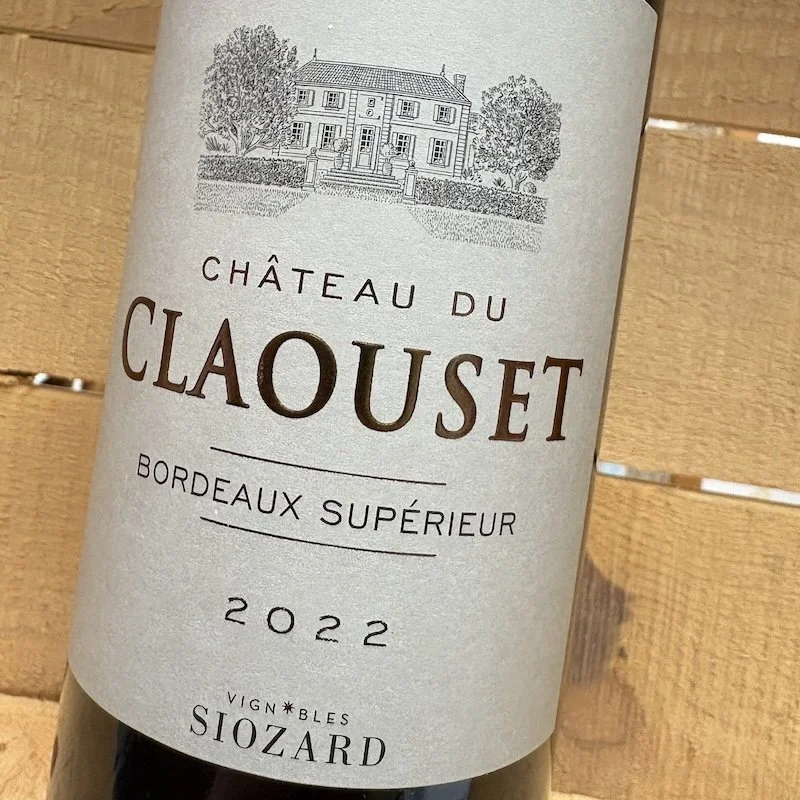Bordeaux, Global Trade & Merlot!
If you’ve ben following the news, a tentative trade deal with the European Union has been outlined, and we’re waiting for clearer picture on whether agricultural products, including wine, may be exempt altogether. By the time you’re reading this, we all might know more. But while I've been tracking global trade negotiations, I’ve also been thinking about Bordeaux. Sure, a glass of wine to take my mind off the topic would be nice, but more to the point, there is no better microcosm to discuss global trade than Bordeaux.
Bordeaux was built around international trade and cooperation. It was Dutch engineers, experienced in controlling water, that helped drain the marshy banks of La Gironde and created plantable land in the great French estuary. British firms invested in the region to supply the chilly British isles with wine from sunnier climes, a product they consumed with great appetite, but could not produce domestically. The structured red wines, made primarily from Cabernet Sauvignon and Merlot, were well suited to aging in barrels during transport on ships, and paired well with English roast beef. On the whole, Bordeaux is a success story thats not only generated a lot of wealth for the region, but merchants globally, and it has also produced a lot of really great wine.
Bordeaux has a special place in my heart. The first time I tasted a wine older than I was, it was a St. Emilion Grand Cru Classé, from Bordeaux’s right bank. A lightbulb moments for me, whern I suddenly understood wine was much more than just a drink…I mean, what else can humans consume that is older than they are (besides Twinkies)?
Bordeaux also provided a model for other wine regions from Australia, to South Africa, Argentina and California. The success of all these regions was built on the twin stars of Cabernet Sauvignon and Merlot, with their ability to produces wines that have both broad appeal and great potential for aging. Merlot even became shorthand for red wine itself.
Then something curious happened, about 20 years ago. A little independent film called Sideways hit theaters. The quirky, pompous and flawed protagonist Miles opines over Pinot noir, and famously declares “I am NOT drinking Merlot!”
Practically overnight, Merlot sales cratered, replaced by Pinot noir, which came to dominate the wine conversation for the next two decades. As a proud Oregonian, and someone who spent a dozen years working for wineries in the Willamette Valley, this trend was welcomed. But we definately lost something along the way. Miles’ petulant onscreen outburst threw the noble and worthy Merlot under the bus, and now it’s past time to revisit why Merlot was so prized in the first place.
Simply put, Merlot offers rich, inviting, finely structured, and eminently drinkable wines that also happen to be age-worthy. And where is the gold standard for Merlot? Let’s circle right back to Bordeaux.
Merlot dominates Bordeaux’s Right Bank and Entre-Deux-Mers regions, and it just so happened that’s where brothers David and Laurent Siozard, of Château du Claouset, call home, in the comune of Lugaignac. They follow the grand Bordeaux tradition of business accumen, comfortable in their understanding of the global wine trade, yet remain deeply rooted to their collection of small vineyards. They are a small family operation, with a great big vision; Careful tending of vines, organic farming, and attentive winemaking, even as they think about shipping wine to the far side of the world. As we’ve talked about before, they are still the “small guy” (like us), and know what a delicate balancing act the global wine trade is. Lucky for us, they are drawing on centuries of tradition and experience to deliver this tremendous wine to us; Merlot worthy of shipping around the world.
Château du Claouset
• Bordeaux Supérieur Rouge 2022 •
This beautiful red from Château du Claouset, just like their classic white wine, hits the bullseye —distinctive and compelling, but wont upset your budget.
90% Merlot, 10% Cabernet Sauvignon
Organically farmed grapes
12 months in oak barrels
Nose of ripe black fruit of fresh plum and blackcurrant. A judicious us of oak integrates a touch of toast and spice beautifully. On the palate, a lively freshness leads to lean dusty tannins and elegant finish
Structured to age for 6-10 years in your cellar
We’ve been bringing in Siozard wines for years now, and they remain a consistent pleasure and tremendous value. Don’t hesitate to grab a few of these and open one up to drink now, with a few more for the cellar to enjoy over the next few years. I recently popped the cork of one of these at a campfire cook-out - a beautiful and rewarding glass alongside flame-kissed steaks, sausages and good friends.
